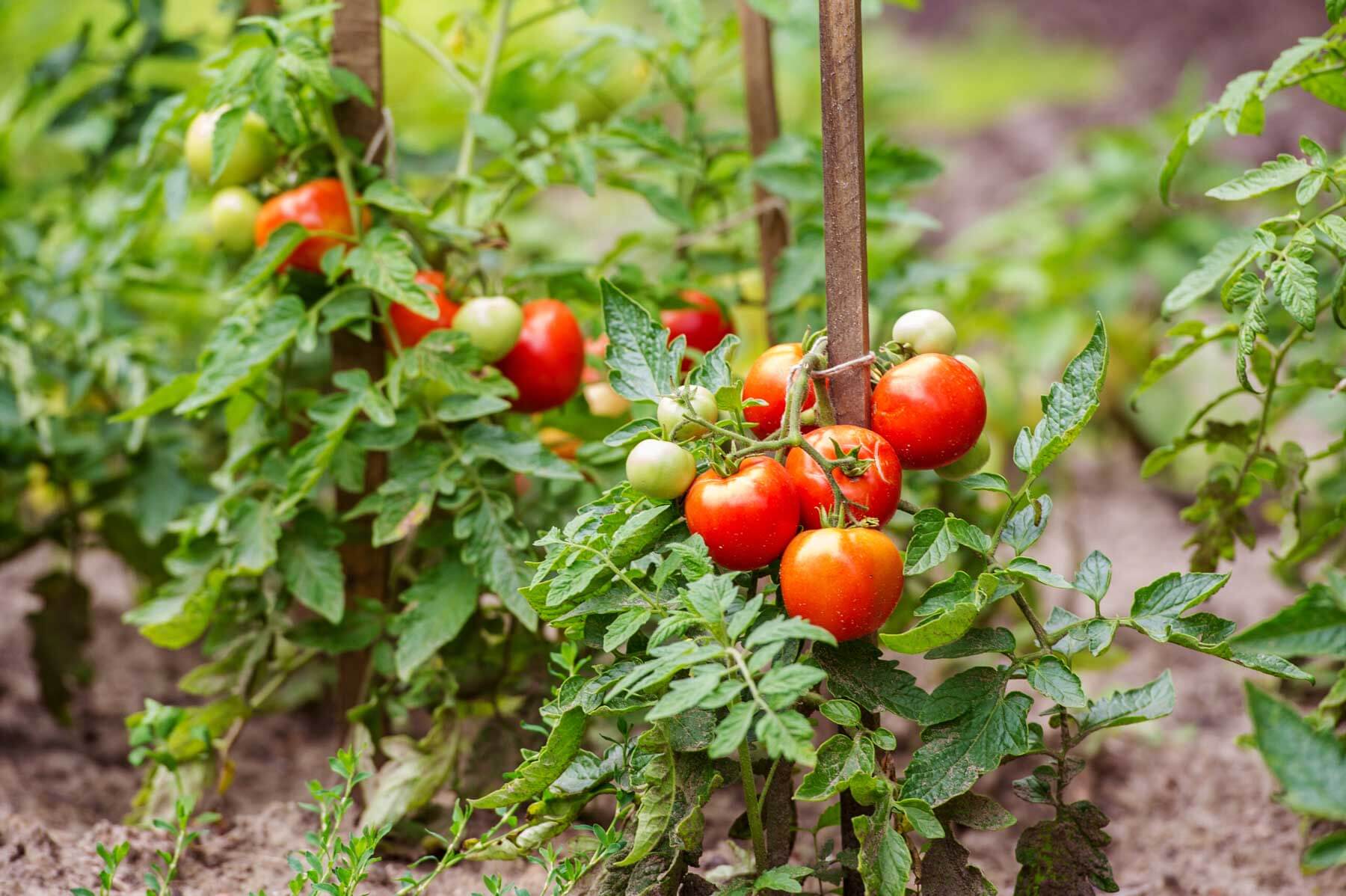Tomatoes are one of the most beloved garden crops across the United States, the United Kingdom, and Canada. Juicy, versatile, and bursting with flavor, they’re a staple in everything from fresh salads to rich pasta sauces. While container gardening and raised beds are popular, nothing beats planting tomatoes directly into the soil. When you grow them in the ground, you give your plants the space, nutrients, and stability they need to thrive. It’s easy to see why everyone loves how to plant tomatoes in the ground!In this guide, we’ll explore the benefits, the step-by-step process, practical tips, and even some common mistakes to avoid so that your tomato plants reward you with a bumper crop.Benefits of Planting Tomatoes in the Ground1. Stronger Root SystemsTomatoes develop extensive roots when planted deep in soil. Unlike pots or shallow beds, the ground allows roots to stretch, absorb more nutrients, and support healthier plants.2. Bigger YieldsDeep roots mean vigorous plants—and vigorous plants mean more flowers and more fruit. Gardeners who plant directly in soil often report heavier harvests compared to container-grown tomatoes.3. Better Moisture RetentionGround soil retains water more evenly than containers. This consistent hydration reduces the risk of common problems like blossom-end rot.4. Nutrient AvailabilityWhen planted in nutrient-rich soil, tomatoes have access to a natural buffet of minerals and organic matter that can be hard to replicate in a pot.5. Seasonal StabilitySoil temperature changes more gradually than containers, giving plants resilience against sudden hot or cold snaps.No wonder gardeners say this is the best method for growing juicy, healthy tomatoes.Essential SuppliesBefore you start, gather these materials:Tomato seedlings (about 6–8 weeks old)Compost or well-rotted manureMulch (straw, shredded bark, or grass clippings)A trowel or garden spadeStakes, cages, or trellises for supportWatering can or garden hoseOptional but helpful: slow-release fertilizer, garden gloves, and pruning shears.Step-by-Step Guide: How to Plant Tomatoes in the GroundStep 1: Choose the Right SpotTomatoes need 6–8 hours of direct sunlight daily. Look for a sunny area with well-draining soil. Avoid spots where tomatoes or other nightshades (like peppers and potatoes) grew last year to reduce disease risk.Step 2: Prepare the SoilLoosen the soil to a depth of about 12–18 inches.Work in compost or aged manure to enrich the bed.If your soil is heavy clay, add sand or organic matter for drainage.Step 3: Dig Deep HolesUnlike most plants, tomatoes thrive when planted deep. Dig holes about 12–18 inches apart.Step 4: Plant the SeedlingsRemove the lower leaves from the plant.Bury the stem so that only the top few sets of leaves are above the soil.Tomatoes sprout roots along buried stems, creating stronger plants.Step 5: Add SupportsInstall cages, stakes, or trellises immediately. It’s easier to put supports in place now than risk damaging roots later.Step 6: Mulch and WaterSpread 2–3 inches of mulch around the base to regulate moisture and suppress weeds.Water deeply at the soil level. Avoid overhead watering, which can spread disease.Pro Tips for Tomato Success1. Consistent WateringTomatoes don’t like extremes. Keep soil evenly moist, especially during fruiting season. A drip irrigation system is ideal.2. Prune for AirflowRemove suckers (small shoots between the stem and a branch) to direct energy into fruit production. Also, prune lower leaves to improve airflow and prevent soil splash.3. Feed RegularlyEvery 2–3 weeks, add a tomato-specific fertilizer rich in potassium and phosphorus. This boosts flower and fruit development.4. Rotate CropsDon’t plant tomatoes in the same spot every year. Rotate with beans, lettuce, or root crops to maintain soil health.5. Protect Against PestsKeep an eye out for aphids, tomato hornworms, and slugs. Companion planting with basil or marigolds can naturally deter pests.Common Mistakes to AvoidPlanting too close together – Tomatoes need space for airflow. Crowded plants are prone to disease.Overwatering or underwatering – Irregular watering causes split fruit and blossom-end rot.Skipping support – Without cages or stakes, plants may sprawl, making fruit more vulnerable to pests.Ignoring soil quality – Poor soil equals poor tomatoes. Always enrich before planting.Best Tomato Varieties for Ground PlantingBeefsteak – Large and juicy, perfect for sandwiches.Roma (Plum) – Meaty and low in water, ideal for sauces.Cherry Tomatoes – Small, sweet, and prolific.Heirloom Varieties – Unique colors and rich flavors.Plant a mix to enjoy a variety of uses throughout the season.Why Everyone Loves How to Plant Tomatoes in the GroundGrowing tomatoes directly in the soil connects you with one of gardening’s simplest joys: watching small seedlings transform into towering plants loaded with ripe, sun-warmed fruit. This method is cost-effective, sustainable, and perfect for both beginners and experienced gardeners. With deeper roots, stronger growth, and bountiful harvests, it’s clear why so many gardeners insist this is the best way to grow tomatoes.ConclusionPlanting tomatoes in the ground is straightforward, rewarding, and guarantees healthier plants with bigger harvests. By choosing the right spot, enriching your soil, and following best practices for watering and pruning, you’ll enjoy fresh, homegrown tomatoes all season long.Whether you’re in the U.S., the U.K., or Canada, nothing beats the satisfaction of picking a ripe tomato straight from the vine. And now you know exactly why everyone loves how to plant tomatoes in the ground!

